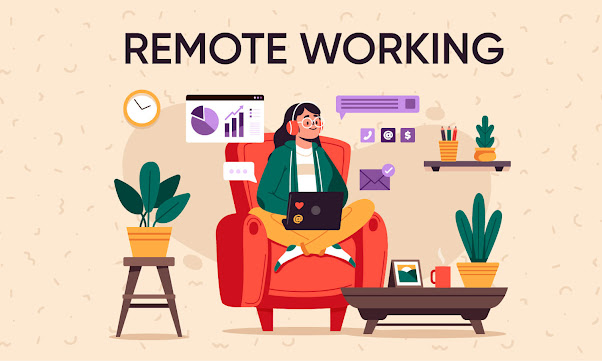Navigating the Downsides of Remote Work
Navigating the Downsides of Remote Work: Tips for Employers and Employees

Working remotely has become a common practice in many industries, especially since the onset of the COVID-19 pandemic. While it has many benefits, such as increased flexibility and reduced commute times, there are also potential downsides that employers and employees need to consider. In this blog post, we will take a closer look at some of the risks associated with remote work and how to mitigate them.
Establishing boundaries One of the most significant downsides of working remotely is the challenge of establishing boundaries between work and personal life. Since remote employees don't have to commute, they may be tempted to start working early in the morning or continue working late into the night. This can lead to burnout, decreased productivity, and ultimately, decreased job satisfaction. To mitigate this risk, employers can encourage employees to set clear boundaries by creating a dedicated workspace, maintaining a consistent work schedule, and taking breaks throughout the day to recharge.
Isolation Another potential downside of remote work is the isolation it can create. Being away from colleagues and the social interactions that occur in an office setting can lead to feelings of loneliness and disconnectedness. To address this, employers can encourage remote workers to participate in team-building activities, offer regular check-ins with managers, and provide opportunities for virtual social interactions.
Eliminating serendipitous encounters One of the benefits of working in an office is the spontaneous interactions that can occur between coworkers from different departments or teams. This can lead to new ideas, collaborations, and a sense of community within the workplace. Remote work eliminates these serendipitous encounters, which can lead to a lack of creativity and innovation. To mitigate this risk, employers can create opportunities for remote workers to connect and collaborate through virtual brainstorming sessions or online chat groups.
Distractions While remote work eliminates some of the distractions that can occur in an office, it can also come with its own set of distractions. Working from home can be difficult if there are children or other family members around who require attention, or if there are household tasks that need to be completed. Additionally, remote workers may be more likely to succumb to procrastination, since they don't have the same level of accountability that comes with working in an office environment. To mitigate these risks, employers can provide remote workers with tips on time management and work-life balance, encourage them to create a dedicated workspace, and provide the necessary tools and resources to help them stay productive.
In conclusion : While remote work has many benefits, it also comes with potential downsides that need to be addressed to ensure the well-being of employees and the success of the company. Employers can mitigate these risks by establishing clear guidelines and expectations for remote work, providing the necessary support and resources, and fostering a sense of community and collaboration among remote workers. By doing so, employers can enjoy the benefits of remote work while minimizing the potential downsides.




ความคิดเห็น
แสดงความคิดเห็น